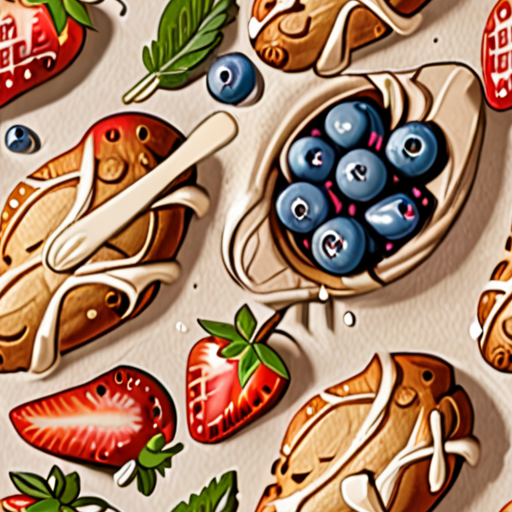When it comes to baking perfect loaves of sweet bread, understanding the intricacies of sweet bread dough is crucial. Adding sugar to bread dough may seem like a straightforward process, but it plays a significant role in determining the final product’s texture, flavor, and overall quality. By mastering the art of making sweet bread dough, bakers can unlock a world of possibilities, from creating classic sweet bread recipes to experimenting with unique flavors and ingredients.

Adding Sugar to Bread Dough
Sugar plays a crucial role in bread making, affecting the texture, flavor, and overall appearance of the final product.
- Sugar acts as a liquefier, absorbing water and weakening the gluten structure, resulting in a looser dough.
- The addition of sugar causes the dough to expand more during baking, leading to a lighter and airier crumb.
- Sugar also contributes to a sweeter flavor profile, which can be balanced by adjusting the type and quantity of sugar used.
- However, excessive sugar can lead to a sticky and difficult-to-work-with dough, requiring adjustments to the recipe and handling technique.
In traditional Mexican bread making, sugar is often used to enhance the flavor and texture of pan dulce, a sweet bread that is a staple in many Mexican households.
To incorporate sugar into your bread dough effectively, consider the following tips:
- Use a combination of granulated and brown sugar for added depth of flavor.
- Avoid overmixing the dough, as this can cause the sugar to become unevenly distributed and lead to a tough crust.
- Adjust the yeast quantity according to the type and amount of sugar used, as high sugar levels can inhibit yeast activity.
- Monitor the dough’s temperature and humidity levels to prevent over-proofing, which can result in a dense and soggy crumb.
By understanding the effects of sugar on bread dough and implementing these tips, you can create delicious and visually appealing bread that showcases the perfect balance of sweetness and texture.
Difference Between Sweet Dough and Regular Dough
Sweet dough and regular dough may seem like interchangeable terms, but they actually refer to distinct types of dough used in various baked goods.
- Sweet Dough: A type of enriched dough that contains ingredients like eggs, butter, and sugar, making it soft and moist. This type of dough is often used for pastries, cakes, and other sweet treats.
- Regular Dough: Also known as plain dough, this type of dough typically consists of flour, water, yeast, salt, and sometimes sugar. It’s commonly used for bread, pizza crusts, and other savory baked goods.
Key Differences:
- Eggs and Butter: Sweet dough includes eggs and butter, giving it a richer flavor and texture. Regular dough does not contain these ingredients.
- Rise Time: Due to the presence of eggs and butter, sweet dough takes longer to rise compared to regular dough.
- Flavor Profile: Sweet dough has a sweeter and more complex flavor profile, while regular dough has a milder taste.
- Usage: Sweet dough is ideal for sweet baked goods, whereas regular dough is better suited for savory items.
Tips for Working with Sweet Dough:
- Plan Ahead: Allow sufficient time for the dough to rise, as it can take longer due to the added ingredients.
- Use Quality Ingredients: Choose high-quality eggs, butter, and sugar to ensure the best flavor and texture.
- Don’t Overmix: Mix the dough just until the ingredients come together, as overmixing can lead to a dense final product.
Tips for Working with Regular Dough:
- Keep it Simple: Use basic ingredients and avoid adding too many extras, as this can affect the dough’s texture and flavor.
- Monitor the Rise: Keep an eye on the dough’s rise time, as it can vary depending on factors like temperature and yeast activity.
- Shape with Care: Handle the dough gently when shaping it into its final form, as rough handling can cause it to tear or become misshapen.

How to Make Bread Taste Sweeter
To make bread taste sweeter, there are several methods you can try.
- Add a small amount of sugar or honey to the dough before baking. This will give the bread a subtle sweetness and a hint of caramel flavor.
- Try using a combination of white and brown sugar for added depth of flavor.
- Experiment with different types of sweetener, such as maple syrup or agave nectar, for unique flavor profiles.
- Incorporate dried fruits, like cranberries or cherries, into the dough for natural sweetness and chewiness.
- For a more intense sweetness, try adding a drizzle of honey or maple syrup to the bread after it has cooled.
When working with sweet ingredients, remember to balance the flavors to avoid overpowering the bread. A little sweetness goes a long way, so start with small amounts and adjust to taste.
Additionally, consider the type of flour you’re using, as some flours may have a naturally sweeter or nuttier flavor than others.
By experimenting with these methods and finding the perfect balance of sweetness, you’ll be able to create deliciously sweet bread that’s sure to please any crowd.
At Panito Mole , we love experimenting with new flavors and techniques to create the most delicious and authentic Mexican breads.
Whether you’re a seasoned baker or just starting out, our recipes and tips will guide you every step of the way to creating mouthwatering bread that’s sure to impress.
So why wait? Get baking and discover the joy of making bread taste sweeter!

Choosing the Best Yeast for Sweet Bread
When it comes to making delicious sweet bread, selecting the right type of yeast can make all the difference. As a passionate baker, I always look for yeast varieties that can handle high amounts of sugar and deliver consistent results. In my opinion, there are several excellent options available, and I’d like to share my favorites with you.
- Saf Instant Yeast
- Saf Red Yeast
- Saf Gold Yeast
These three types of yeast from Saf are popular among bakers due to their ability to tolerate high sugar levels and produce well-balanced flavors. Each has its unique characteristics, which I’ll discuss below:
Saf Instant Yeast
This versatile yeast is suitable for a wide range of baked goods, including sweet breads. Its instant activation makes it easy to work with, and it produces a light, airy texture that’s perfect for delicate pastries. However, keep in mind that Saf Instant Yeast may not perform as well in extremely high-sugar environments, so adjust your recipe accordingly.
Saf Red Yeast
Saf Red Yeast is specifically designed for Asian-style breads and pastries, which often feature high sugar content. Its robust flavor profile and ability to ferment quickly make it an excellent choice for these types of baked goods. Nevertheless, be cautious when using Saf Red Yeast in sweet bread recipes, as its strong flavor might overpower other ingredients.
Saf Gold Yeast
As I mentioned earlier, Saf Gold Yeast is ideal for sweet breads and other high-sugar applications. Its osmotolerant properties allow it to thrive in environments with high sugar concentrations, resulting in a tender crumb and a rich, complex flavor. When working with Saf Gold Yeast, remember to maintain a balance between sugar and yeast to prevent over-proofing.
Tips for Using Saf Yeast
To get the most out of your Saf yeast, follow these general guidelines:
- Always store yeast in a cool, dry place to preserve its potency.
- Mix yeast with warm water (around 100°F to 110°F) before adding it to your dough.
- Avoid overmixing dough, as this can damage yeast cells and affect fermentation.
- Monitor temperature and humidity levels during proofing to ensure optimal conditions for yeast growth.
By understanding the strengths and weaknesses of each Saf yeast variety and following these basic tips, you’ll be well on your way to creating mouthwatering sweet breads that impress friends and family alike. Happy baking!
What Happens if You Put Too Much Sugar in Yeast?
When working with yeast, it’s essential to strike the right balance between sugar and yeast to achieve optimal results.
- Sugar serves as a vital source of energy for yeast, allowing it to ferment and produce carbon dioxide gas, which causes dough to rise.
- However, excessive sugar can have detrimental effects on yeast, hindering its ability to grow and function properly.
Too much sugar can draw liquid out of the yeast cells, causing them to become dehydrated and sluggish.
- This can lead to slow or no rise in yeast-based baked goods, resulting in dense and flat textures.
- In extreme cases, excessive sugar can even kill off the yeast, rendering it ineffective for fermentation.
To mitigate these issues, consider the following adjustments:
- Add extra yeast to the recipe to compensate for the excess sugar.
- Find alternative recipes that use less sugar or adjust the ratio of sugar to yeast accordingly.
- Be patient and allow the yeast dough to rise for a longer period, as slower fermentation may occur due to the high sugar content.
By understanding the delicate balance between sugar and yeast, you’ll be better equipped to create delicious and well-risen baked goods that showcase the rich flavors of Mexican cuisine.
At Panito Mole , we’re passionate about sharing our expertise in traditional Mexican baking and cooking techniques, including the art of working with yeast and sugar.
For more tips and recipes on mastering yeast-based baked goods, explore our collection of pan dulce and mole recipes, carefully crafted to bring the authentic flavors of Mexico to your table.

Does Sweet Bread Take Longer to Rise?
Sweet bread doughs generally take longer to rise compared to unsweetened ones, although factors like fat content and inclusions can influence the rising time.
- The primary reason for this is that sugar is hygroscopic, meaning it holds onto water, which affects yeast activity.
- Yeast thrives in environments with adequate moisture, making it essential to balance sugar levels in sweet bread recipes.
To optimize rising time, consider the following:
- Adjust Sugar Content: Reduce sugar amounts or use alternative sweeteners like honey or maple syrup, which have lower hygroscopic properties.
- Monitor Fat Content: Balance fat levels in your recipe, as excessive fat can slow down yeast fermentation.
- Incorporate Yeast-Friendly Ingredients: Add ingredients like pineapple juice or apple cider vinegar, which promote yeast growth and activity.
- Control Temperature and Humidity: Ensure a consistent temperature between 75°F and 80°F (24°C and 27°C) and moderate humidity levels to facilitate yeast fermentation.
By understanding the factors influencing sweet bread rising time and implementing these adjustments, you can achieve better results and create delicious, tender loaves.
Tips for Working with Yeast:
- Proof Yeast Before Mixing: Activate yeast in warm water before adding it to the dry ingredients to ensure it’s active and healthy.
- Maintain Cleanliness: Keep your workspace and equipment clean to prevent contamination and ensure yeast ferments properly.
- Respect Yeast Rest Time: Allow yeast sufficient time to ferment and rest, as rushing the process can lead to poor texture and flavor.
Conclusion:
With a deeper understanding of the factors affecting sweet bread rising time and by implementing these tips, you’ll be well on your way to crafting delicious, tender loaves that impress family and friends alike.

0 Comments